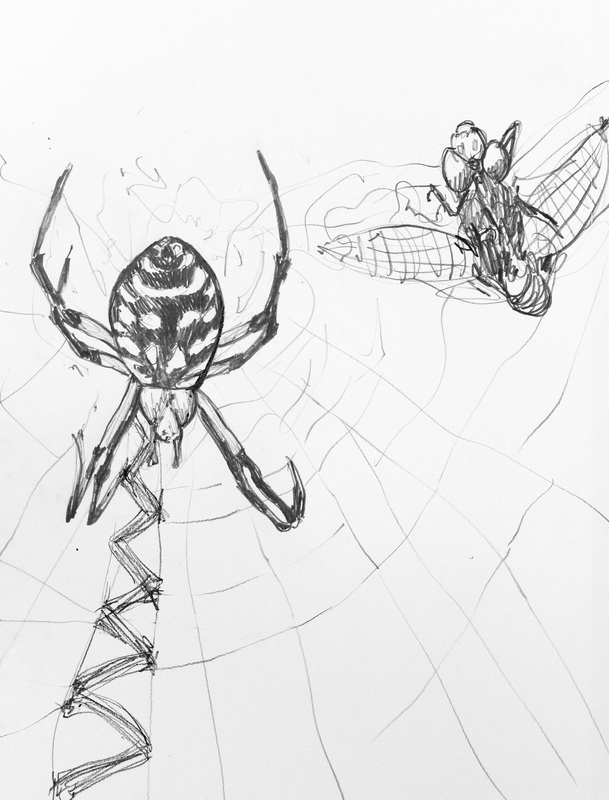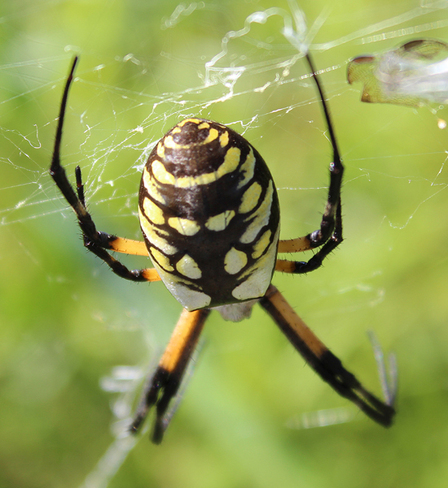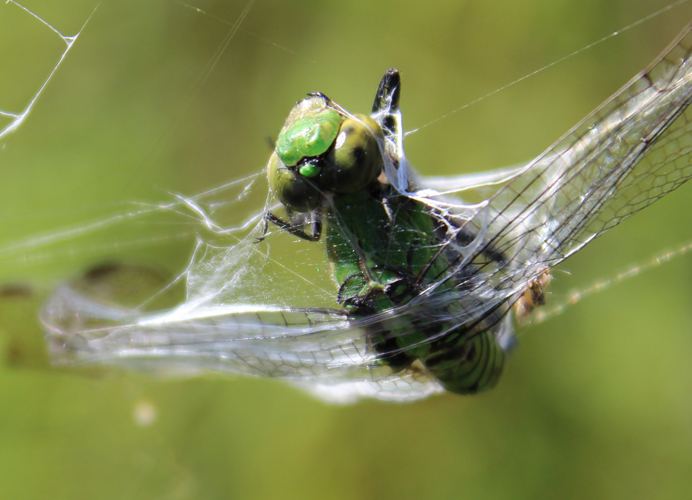A large spider of this type will be a female – she is ¾” to 1 1/8” in body length. An adult spider which is only ¼” to 3/8” long is a male. In our area, the climate should be warm enough for many female spiders to live several years (?). Males evidently die after mating, in their first year. Sometimes after a male dies, his female partner will eat his body.
Both males and females weave thick zigzags into their webs. The zigzags are called stabilimenta (the singular is stabilimentum), which implies they function to help stabilize the web’s structure, but that is only a theory. Another idea is that maybe the zigzag helps birds see the web better so they don’t destroy it by flying through it. Or does it somehow attract prey by its dramatic and noticeable appearance? Or maybe the zigzag draws attention away from the spider itself, serving as camouflage? Isn’t it amazing what biologists don't know yet?
After mating, a female will produce a papery looking web sac with hundreds of eggs in it (sometimes she will produce several of these sacs, attached to her web). Evidently she does not stray far from her own area during her lifetime.
This kind of spider doesn’t see well, but it is very sensitive to air currents and vibrations. It can easily tell when an insect (or even a small lizard) runs into its web and gets caught on the sticky cross strands. The spider often vibrates her web when an insect lands in it. She will wrap up the prey with more spider silk.
All types of spiders bite their prey, injecting a venom that paralyzes it and starts to break down its body tissues, making the prey easy to digest. But if a person gets bitten by a golden garden spider, it will not cause more harm than a bee sting. If you don’t try to touch the spider or mess with its web, it probably doesn’t know you are there. So leave it alone and let it catch insects.
Who eats these spiders? Lizards, wasps (especially mud daubers), some kinds of birds, and shrews, mostly.
For information about visiting the Phnizy Swamp: http://phinizycenter.org/



 RSS Feed
RSS Feed